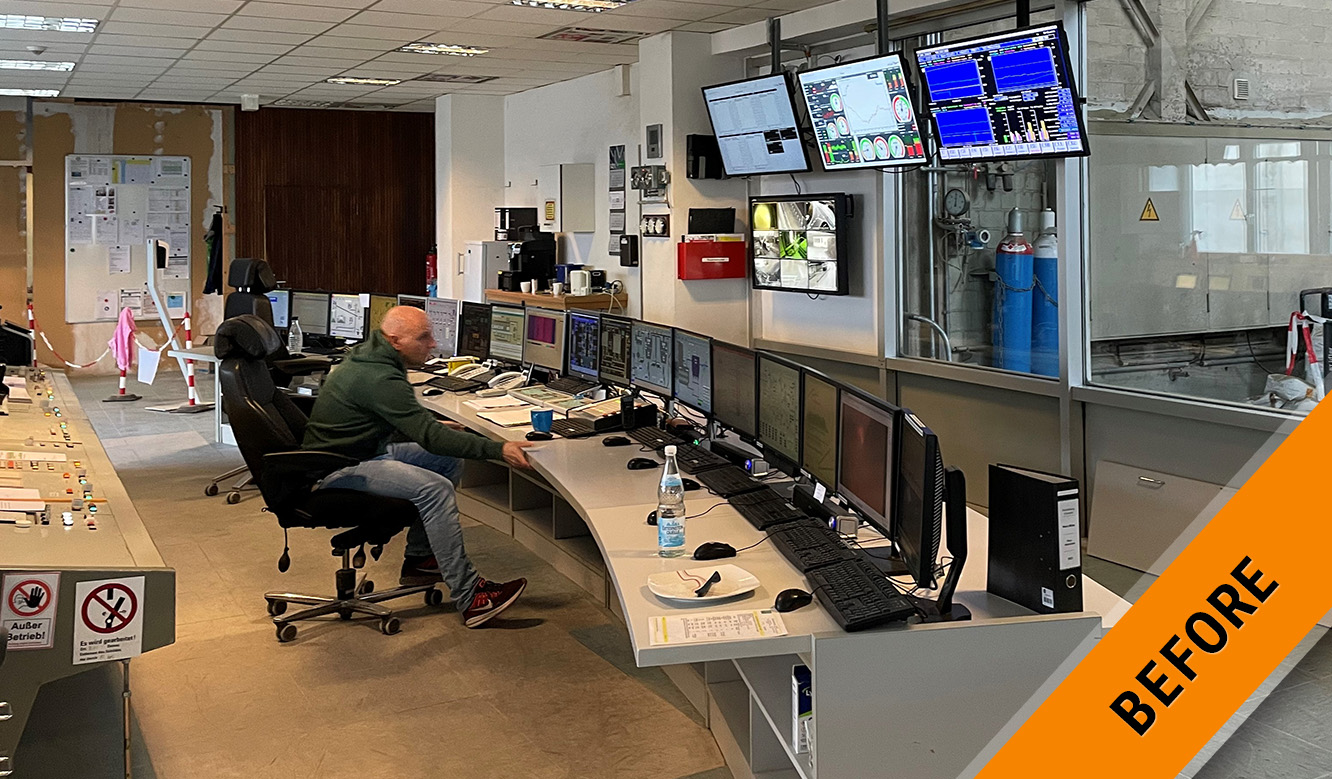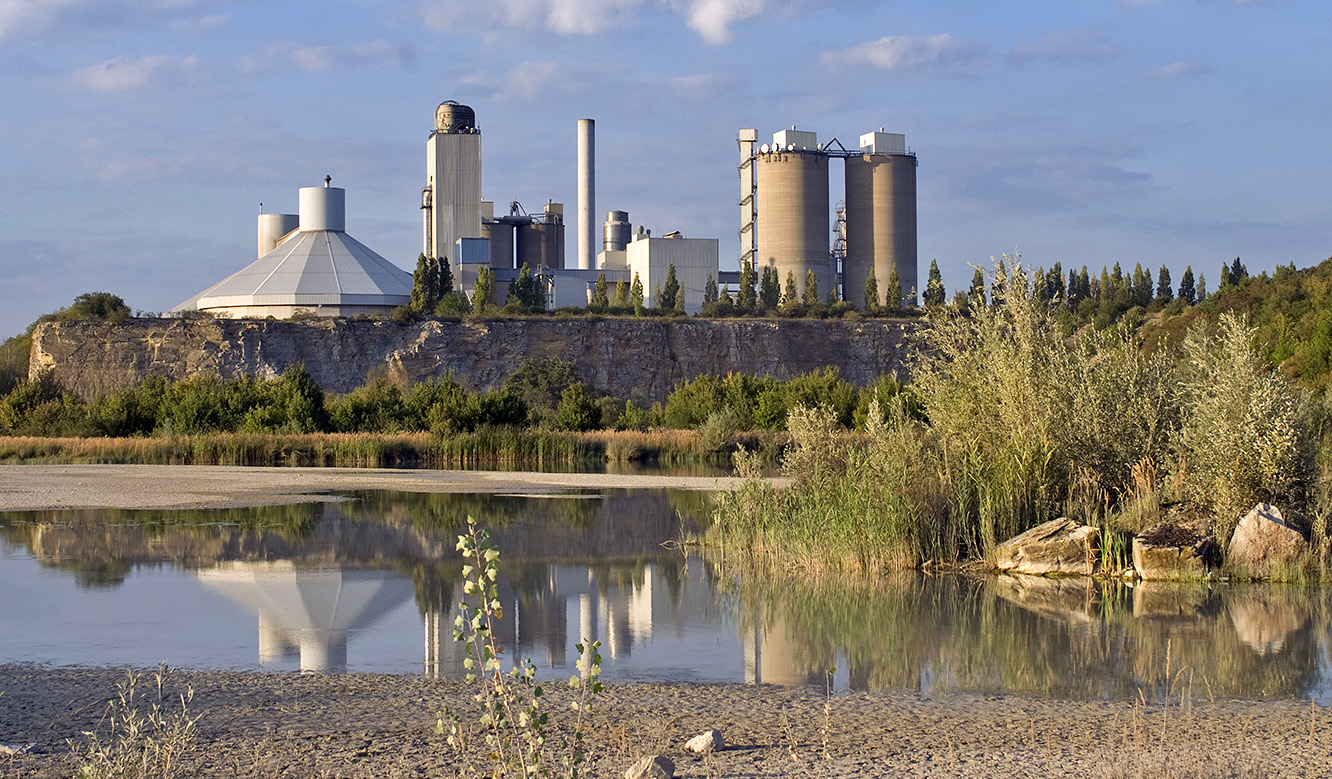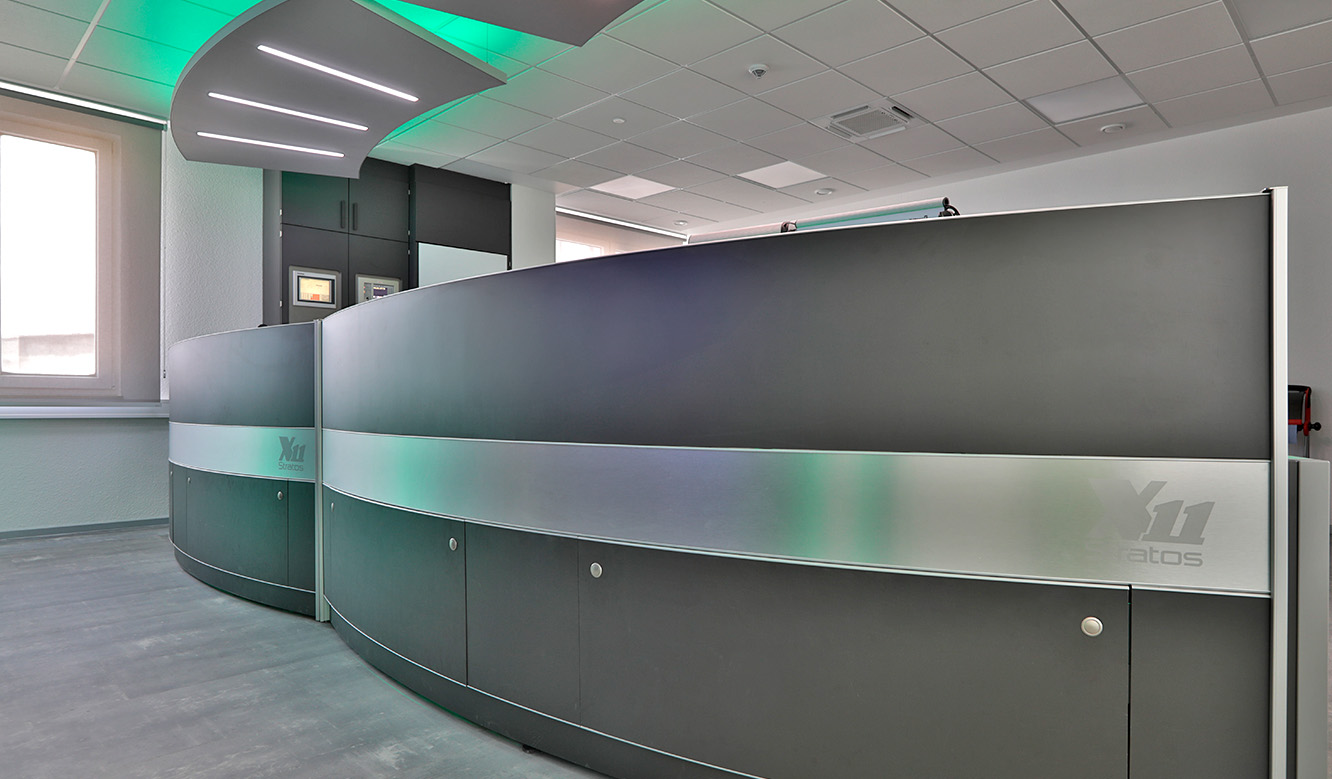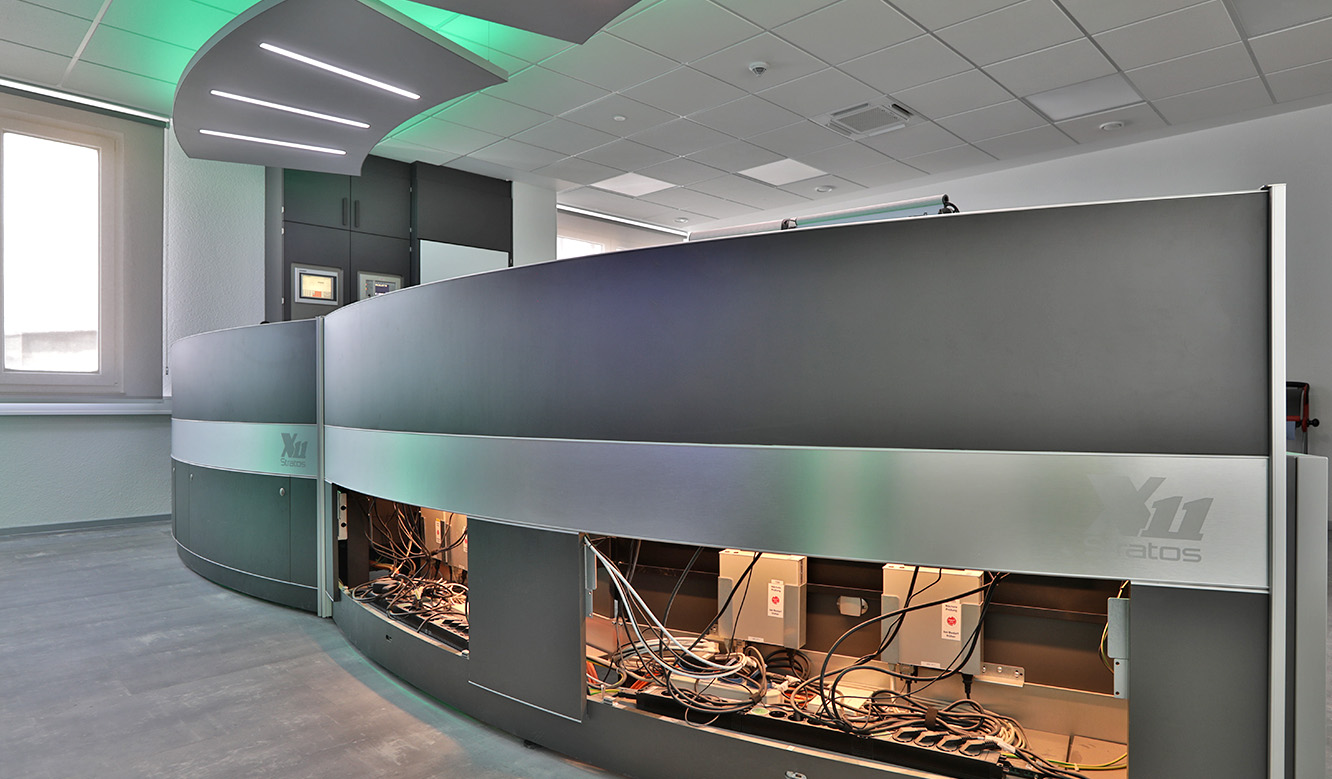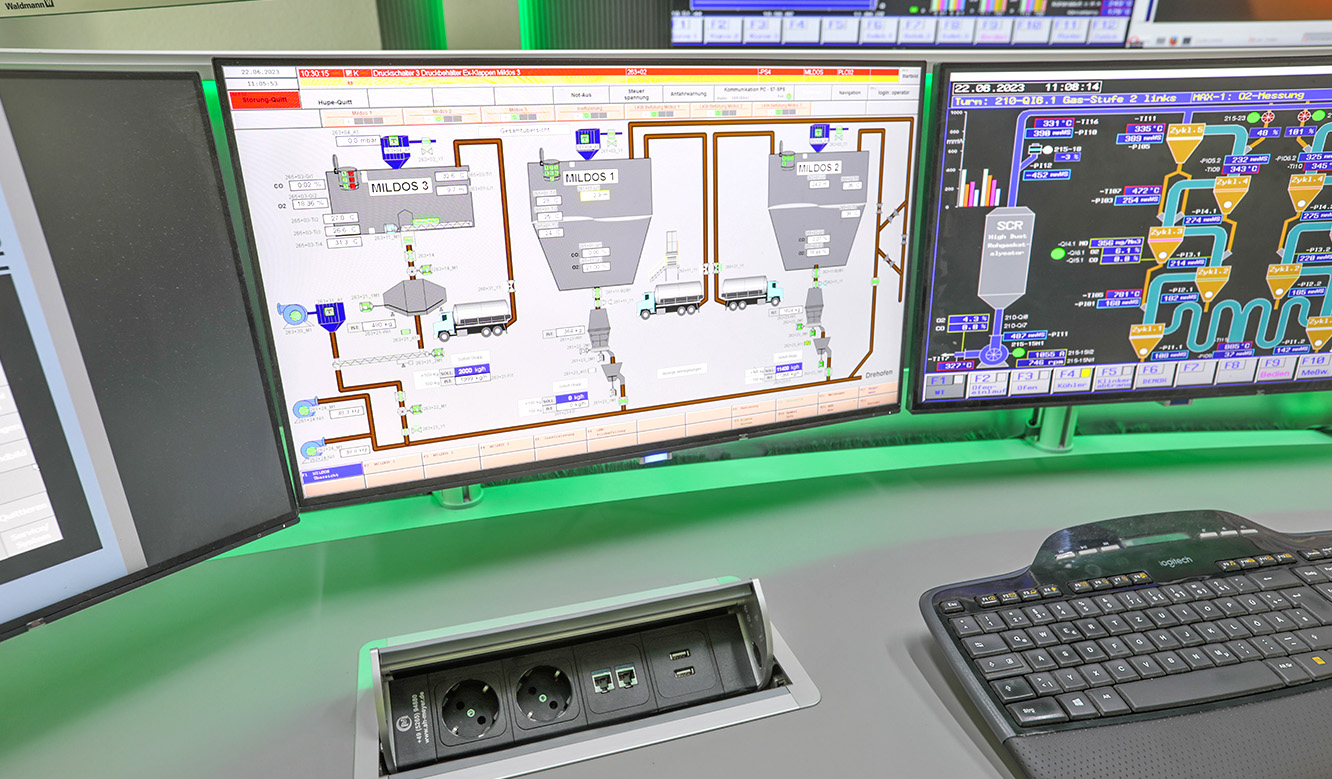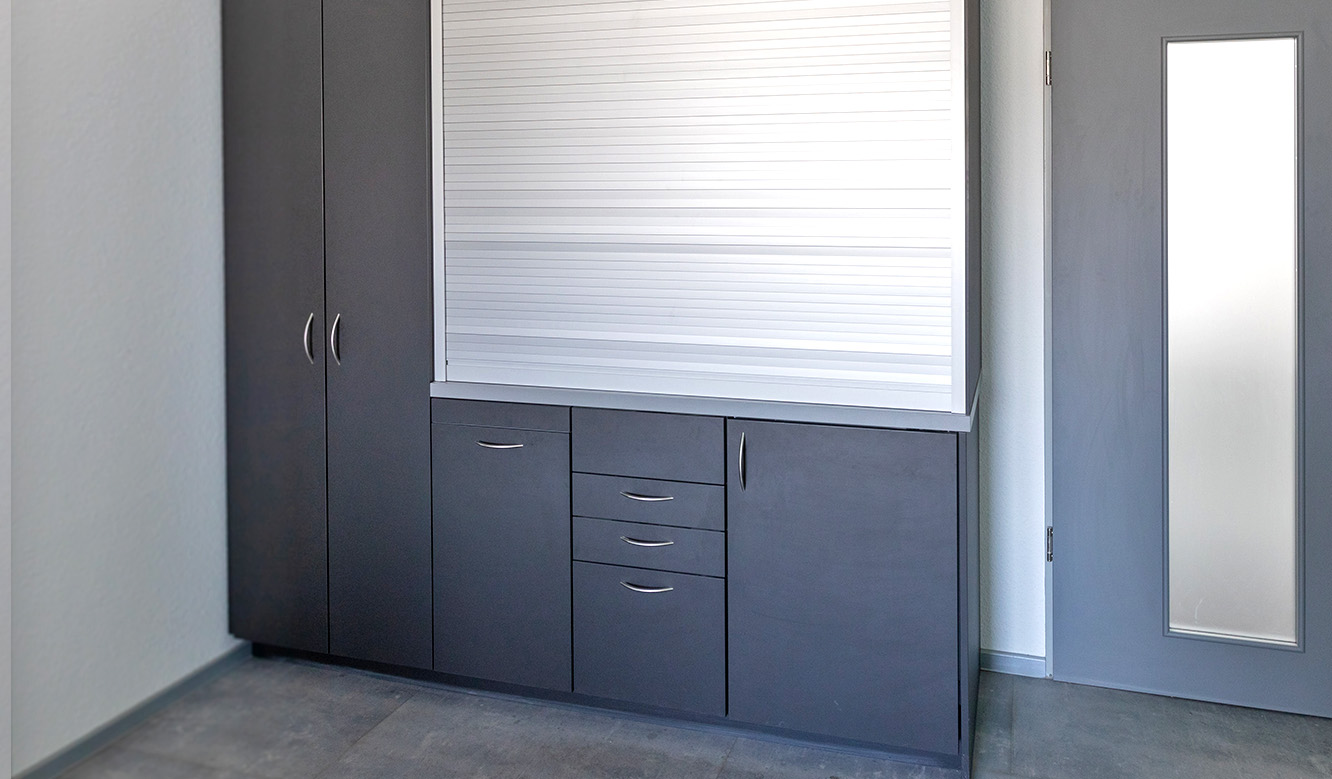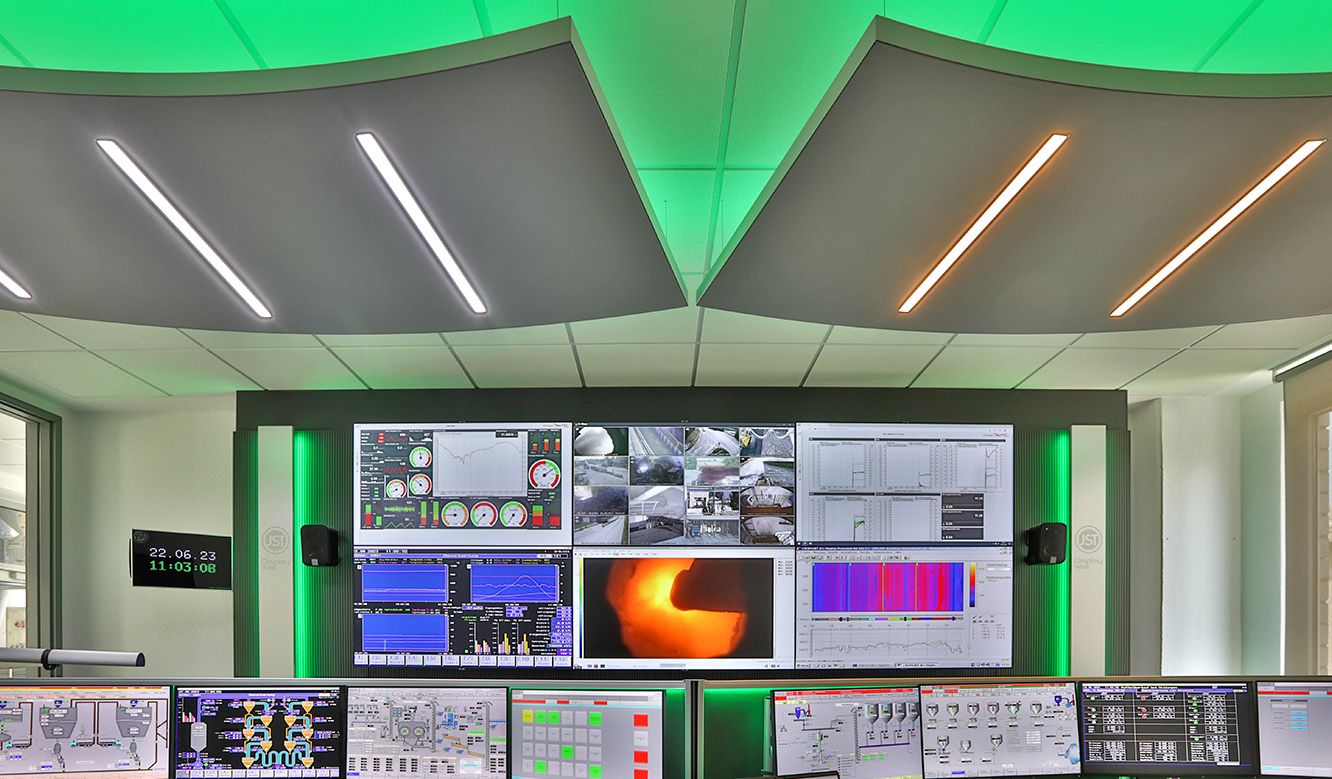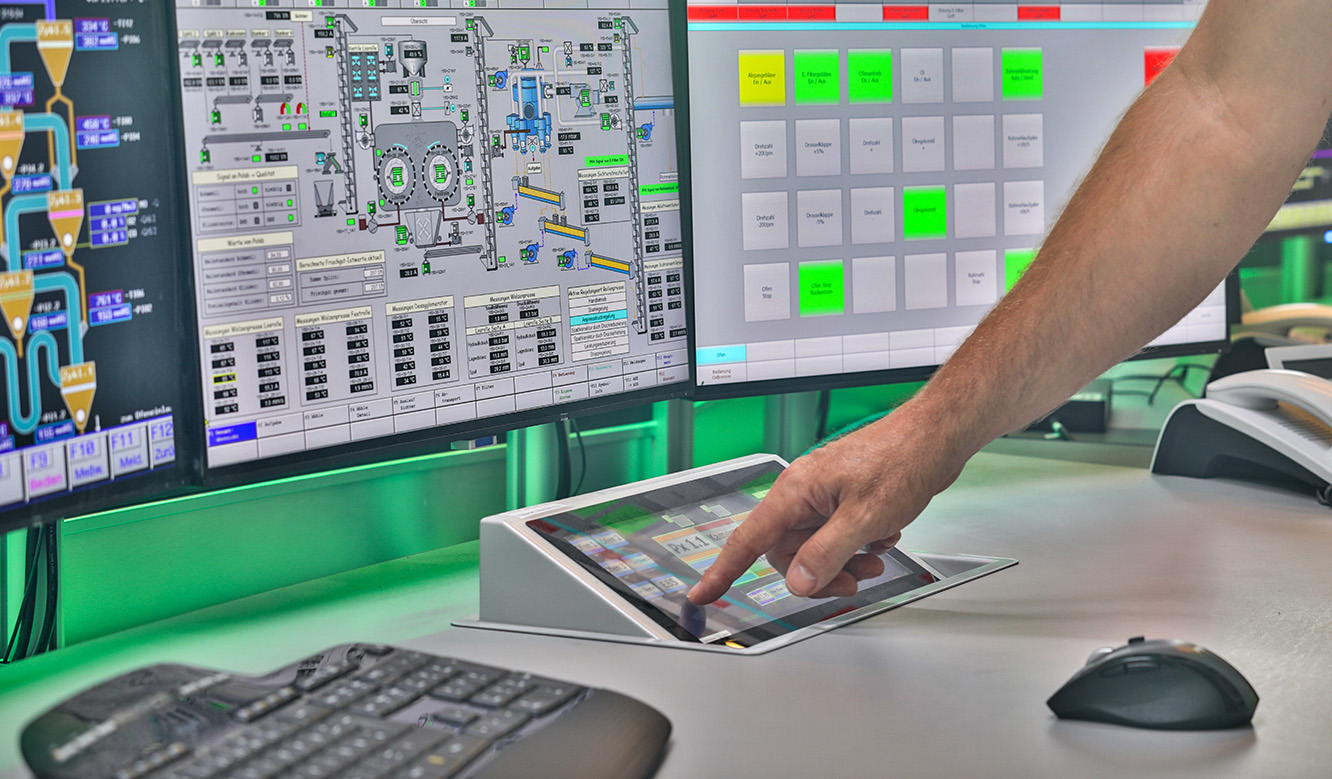
Control center in cement plant put in position for the decarbonization
Here things are moving in big steps toward a climate-neutral future! The Heidelberg Materials company is providing the evidence: Even in cement production – known for high carbon dioxide emissions – CO2 neutrality is not a utopia. The necessary conditions for this are to be created at the Geseke site by 2029. The control center, which will later take over the management of the additional processes, was already positioned for the decarbonization offensive at an early stage – with solutions from JST – Jungmann Systemtechnik®.
A long row of work tables, 20 monitors on them, each displaying a different process flow. In front of them: two control station operators who have a daily “race” on their office chairs along the phalanx of screens.
Outdated control center with far too many monitors
“We had a completely outdated control center with far too many monitors, rooms that were not air-conditioned – almost like an office workstation multiplied 20 times,” reports the man who supervised the control center project at the Geseke cement plant. For Stefan Naber (Operations Manager Production)), one thing was certain: The visualization options in the control room were already insufficient for the current process control. And: “We couldn’t even set up as many screens here as we’ll need in the future to visualize the new systems.”


Heidelberg Materials Geseke – Control Center before and after renovation
Perfect prototype already in operation for colleagues
For the project manager, it was quickly clear what the ideal control center should look like and what it should be able to do. Just two years earlier, the Heidelberg Materials colleagues at the Ennigerloh site had put the perfect prototype into operation – equipped and installed by Jungmann Systemtechnik. “We spoke to our colleagues on site and received very positive feedback throughout,” recalls Stefan Naber. So the decision was easy to select the right components for the future tasks.
Mammoth task: Decarbonization
Indeed, a mammoth task awaits the Geseke cement plant with complete decarbonization. The GeZero project, which Heidelberg Materials is launching in Geseke, will be the first to realize a complete CCS (carbon capture and storage) value chain for the capture, transport, and permanent storage of all CO₂ emissions at a German domestic site.
From rock, via crushed stone and raw meal to clinker
Whether energy supply, pressures, bearing or shell temperature, whether the processing of rock into crushed stone in the so-called crusher or the burning of raw meal into clinker in the rotary kiln – the new control station now uses innovative technology to monitor all this. A modern large screen wall, which can be controlled conveniently and efficiently thanks to the flexible KVM system MultiConsoling®, in combination with selected sources on the workstation monitors, replaces the formerly seemingly endless column of screens.
Faster and more secure thanks to optimized overview
Stefan Naber: “The overview has improved enormously. We receive automated messages. In the event of a warning, the corresponding application is switched on immediately.” The JST CommandPads® also contribute to this optimized overview; touch displays with which all sources of the control station can be conveniently called up or, for example, alarms can be quickly confirmed.
Ergonomic control room consoles whose height can be varied at the touch of a button are also among the equipment features, such as the OPAL X11®. The ceiling sail scores points not only in terms of lighting but especially with regard to room acoustics.
"The elders were a little skeptical at first"
Project manager Naber is positive about the acceptance of the new installation among the shift workers from the control center: “The older ones, who had already been working with a grown structure for 20 or 30 years, were a little skeptical at first. But their doubts quickly subsided. And the younger employees were already convinced during the planning phase.”
The plant manager also remembers the cooperation with the JST team very well: “The work together with JST – that went very well! The schedule was kept, requests were answered quickly, and the implementation was flawless.
Our references today (selection)
A
B
C
E
H
I
M
N
P
R
S
- s.Oliver, Rottendorf
- SachsenEnergie, Dresden
- SAG, Berlin
- SAG, Nürnberg / Nürnberg Messe
- Salzgitter Flachstahl
- Senvion SE, Osterrönfeld
- SGL Carbon Group, Bonn
- SIEMENS
- SIEMENS, Wegberg
- Spenner, Erwitte
- Städtische Werke Magdeburg
- Stadtwerke Gießen
- Stadtwerke Ratingen
- Stadtwerke Schwerin, Kraftwerk Süd
- Stadtwerke Steinburg GmbH, Itzehoe
- Stadtwerke Wolfenbüttel
- Starlim Sterner, Marchtrenk
- STORAG ETZEL, Friedeburg
- Straßenverkehrsamt Frankfurt am Main
V
Unsere Referenzen (Archive)





